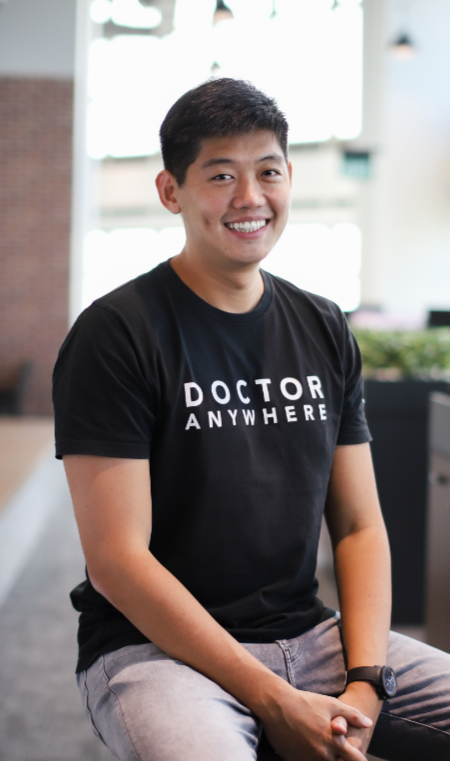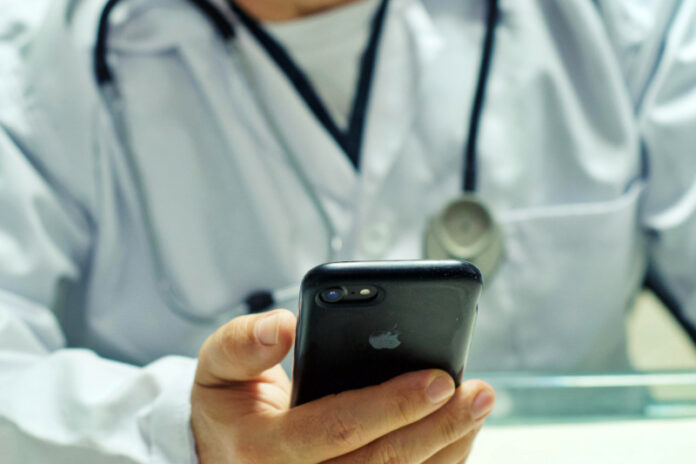Even in a high-income economy like Singapore, not all its residents have immediate access to healthcare services. For one, seniors living in older housing estates cannot go to a clinic or a hospital because of old age.
This was what Lim Wai Mun observed back in 2016 while distributing lunch boxes to the elderly, as part of a corporate outreach program.
“The experience forced me to think about the stark reality of inequalities of healthcare access, even in a developed and urbanised nation like Singapore,” he remarked.
As a result, the Mechanical Engineering graduate, who was then working at Temasek Holdings, knew he had to do something to bring healthcare services closer to senior citizens.
In 2017, Lim founded Doctor Anywhere, a start-up offering healthcare services via a mobile app. Beginning as a not-for-profit side project, the company now serves 2.5 million users across six countries in Southeast Asia— Singapore, Malaysia, Thailand, Indonesia, Philippines, and Vietnam.
Tech empowerment

With many of Singapore’s population unable to physically consult a doctor at a hospital, a concern exacerbated by the COVID-19 pandemic, the use of a mobile app for telehealth services brought life-saving services to people’s doorstep.
“Our app began with a simple mission: to provide our users with the convenience of receiving medical consultations from the comfort of their home via their mobile device. In addition to online consultations, our omnichannel approach sees us operate a network of physical clinics and pharmacies, home-based health screenings and vaccinations, and an in-app marketplace for health and wellness products and services,” said Lim, who also serves as the company’s CEO.
Platform-wise, the Doctor Anywhere app was built with “native mobile languages for the major mobile OSs, powered by a microservice architecture back-end on Java, running on cloud infrastructure.”
“Besides programming and product engineering, on the back end we also integrate machine learning to better understand user behaviour, building in intelligent auto-suggest features for doctors’ inputs on common diagnoses and prescribed medications to improve efficiency and efficacy,” revealed Lim.
Because Doctor Anywhere was conceptualised and created with a digital-first mindset, the app proved especially useful during the height of the pandemic.
“Our product is built to enable our users to obtain healthcare services straight from the mobile phone. As such, everything we built was built with the objective that services can be obtained digitally,” the CEO noted.
However, everything wasn’t in tip-top shape when the company started out. Like any other business organisation, Doctor Anywhere initially found areas where they could improve.
“While starting up, we had multiple systems across our product development, finance, talent management, inventory/logistics and more, which we have since consolidated and streamlined via a cloud-based digital ERP solution (via NetSuite) to support our regional growth and innovation. This has allowed us to gain better financial visibility, consolidate our operations, and obtain data insights to inform our business direction and seize market opportunities,” Lim recalled.
“Being on the cloud makes our services available to the countries we operate in, making it easier to extend these features and benefits to new countries that we will operate in, and allowing us to scale up very quickly,” he added.
The future of telehealth
What started out as a response to seniors’ lack of access to healthcare, Doctor Anywhere now looks ahead to what technology can do more to transform telehealth.
“Telemedicine 1.0, in its many different primitive forms, has existed for decades since the telephone was invented. In the current iteration, we do believe that technology can tech-enable the healthcare system to bring about greater efficiency, convenience, timeliness, and cost savings to healthcare stakeholders,” said Lim.
“While telehealth has proven its value amidst the pandemic and will remain a key platform to access care, focusing on it alone is no longer a sustainable business model. The next stage requires telemedicine providers to pivot by enabling a more holistic, seamless, and personalised healthcare experience for patients — whereby adding complementary healthcare verticals can ensure future relevance and better health outcomes,” he predicted.
Today, Doctor Anywhere has also expanded to mental wellness, chiropractic and specialist (second opinion) services, as well as a contraceptives subscription service.

The company also teamed up with Omron to integrate the latter’s suite of smart health monitoring devices to the DA platform, enabling users with lifestyle diseases to seamlessly share their health records in real time with their healthcare professionals.
“These are in response to the growing demand as we see consumers gaining more awareness of the importance of their health, and shift from simply seeking treatment for illnesses, towards more preventive measures/healthy lifestyles,” Lim noted.
Moving forward, Lim said the company would have to address the following challenges to telehealth in order to evolve:
- Awareness— Some patients are not aware of digital health services, and may face a lack of information versus a traditional healthcare setting like a clinic.
- Access— Some patients may not have access to the technology required to make effective use of it, e.g. data network access.
“Once understood and addressed, these telehealth benefits and challenges become quickly embedded in the day-to-day routines of patients and providers, and the opportunity to advance healthcare’s future evolution will take shape,” he said.
As such, Doctor Anywhere is planning to undertake the following in the short-term:
- Scaling their tech infrastructure + big data capabilities, and better integration of their online-to-offline user experience.
- Widening products to serve more users in the region, e.g. introducing new healthcare/medical specialty modules, and shortening medication delivery time, personalised healthcare plans, etc.
- Exploring partnerships and collaborations to develop more “exciting and personalised products” for their users.
- Attracting a strong international talent pool to support DA’s product growth plans, while increasing local hires in various markets to deepen their local knowledge and presence.
“In particular, we see opportunities in the cross-border medical specialist care space in SEA as a 2.0 for telehealth, and we are actively looking to tie up the region’s healthcare by helping our users find the most appropriate care provider on our platform,” Lim said.
“Where we see new technologies like AI (and) data analytics delivering significant impact at present is through faster, more efficient teleconsultations and prescriptions, which means patients can receive their medication more quickly, doctors can also serve more patients in the same duration, and deliver an overall better experience,” he concluded.
















